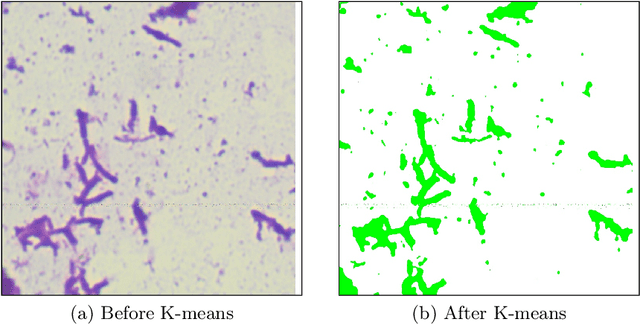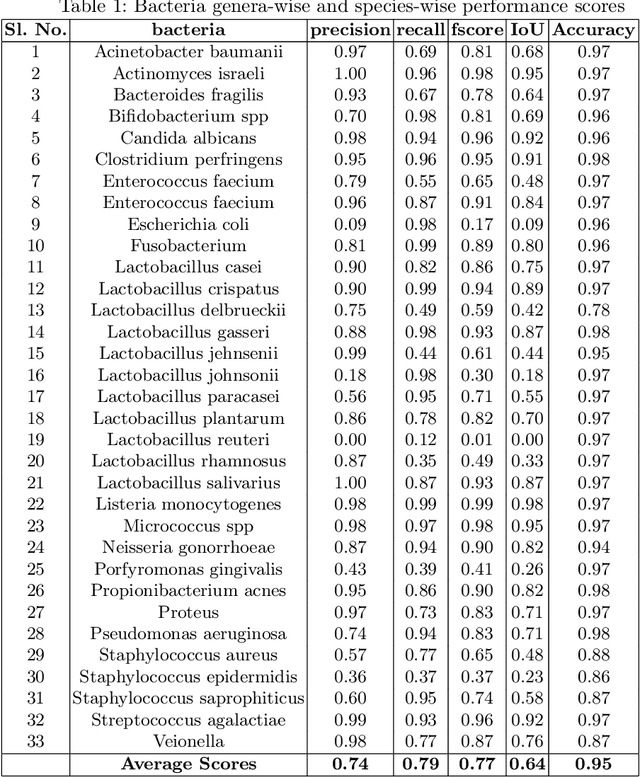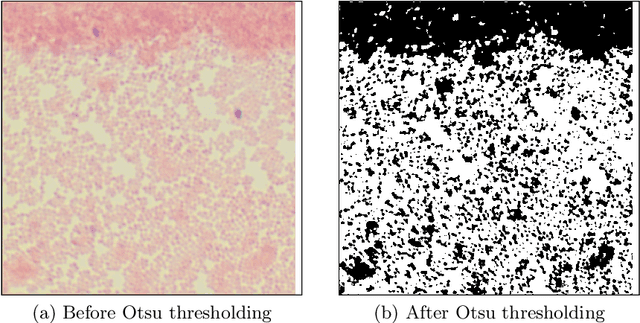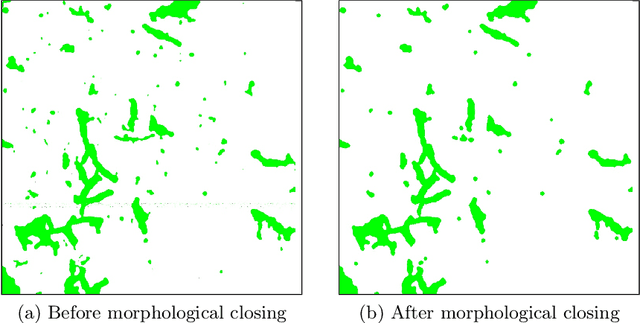Pullagurla Abhijith Reddy
Semi-Automatic Labeling and Semantic Segmentation of Gram-Stained Microscopic Images from DIBaS Dataset
Aug 23, 2022



Abstract:In this paper, a semi-automatic annotation of bacteria genera and species from DIBaS dataset is implemented using clustering and thresholding algorithms. A Deep learning model is trained to achieve the semantic segmentation and classification of the bacteria species. Classification accuracy of 95% is achieved. Deep learning models find tremendous applications in biomedical image processing. Automatic segmentation of bacteria from gram-stained microscopic images is essential to diagnose respiratory and urinary tract infections, detect cancers, etc. Deep learning will aid the biologists to get reliable results in less time. Additionally, a lot of human intervention can be reduced. This work can be helpful to detect bacteria from urinary smear images, sputum smear images, etc to diagnose urinary tract infections, tuberculosis, pneumonia, etc.
 Add to Chrome
Add to Chrome Add to Firefox
Add to Firefox Add to Edge
Add to Edge